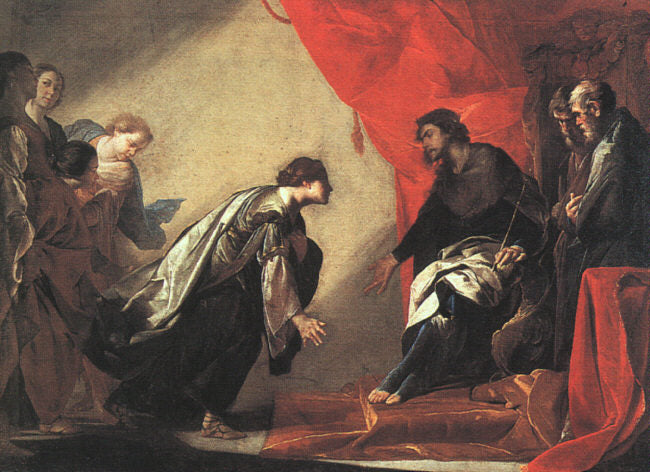Description
The painting Esther and Ahasuerus by the Italian artist Bernardo Cavallino is a work of art that stands out for its elegance and delicacy in the representation of the biblical story of Queen Esther and King Ahasuerus. The work was painted in oil in the 17th century and its original size is 75 x 102 cm.
Cavallino's artistic style in this work is characterized by his great skill in the chiaroscuro technique, which allows him to create light and shadow effects that give depth and realism to the scene. In addition, his style is framed within the Italian Baroque, which is characterized by the use of dynamic and dramatic forms, as well as by the richness in the representation of details.
The composition of the work is very interesting, since Cavallino manages to create a perfect balance between the characters and the elements that surround them. The figure of Esther, who is the center of the scene, is located at the vanishing point of the work, which gives it great prominence and visual strength. In addition, the artist uses architectural and decorative elements to frame the scene and create an atmosphere of luxury and opulence.
Color is another aspect that stands out in this work. Cavallino uses a palette of bright, warm tones that give the work a bright and vibrant appearance. In addition, the artist uses color symbolically to represent the purity and innocence of Esther, who wears a white dress, while King Ahasuerus wears red, symbolizing his power and authority.
The history of the painting is also very interesting, since it represents one of the most important episodes of the Old Testament. The story of Esther and Ahasuerus tells how Esther, a young Jewish woman, becomes the wife of the Persian king Ahasuerus and how she manages to save her people from the threat of extermination. Cavallino's work represents the moment when Esther reveals herself to the king and asks him to save her people.
Finally, there are little-known aspects of this work that make it even more interesting. For example, Cavallino is believed to have painted this work while imprisoned in Naples, giving it a very special historical and emotional value. In addition, the work has been subject to various interpretations and analyzes by experts in art and history, which makes it a work of great interest and relevance.

